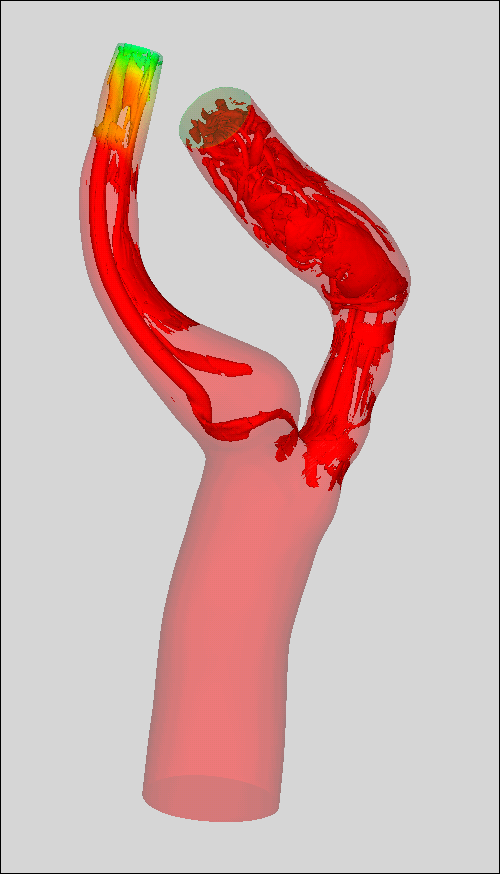
Shown here is the turbulence generated when the inlet flow is steady, at a flow rate that corresponds roughly to that of peak systole. The ECA is relatively quiscent, with an isolated vortex core in the center. Under pulsatile conditions, the turbulence is roughly the same, but exists over a short duration, which is interspersed with relatively long quiescent periods corresponding to the diastolic phase.
The coherent structure are identified using the lambda-2 criterion of Jeong & Hussein (JFM'95). These simulations were performed on Argonne's IBM BGL using 1024 processors. The work is part of a collaboration with Prof. Frank Loth of the Mechanical Engineering Dept. at the University of Illinois, Chicago, and Prof. Hisham Bassiouny of the Vascular Surgery Section, University of Chicago. Former students who helped with this project include Seung E. Lee (now at MIT) and Sang-Wook Lee (now U. Toronto).

Return to Paul Fischer's homepage.
Last update: May 15, 2007